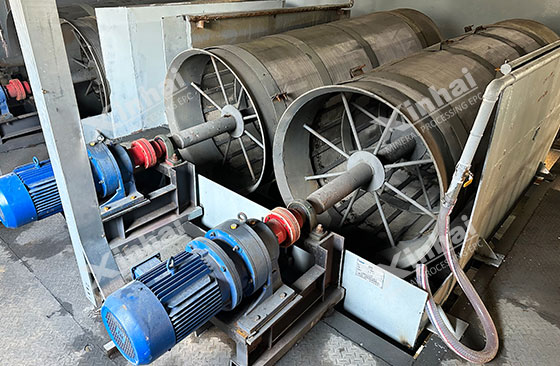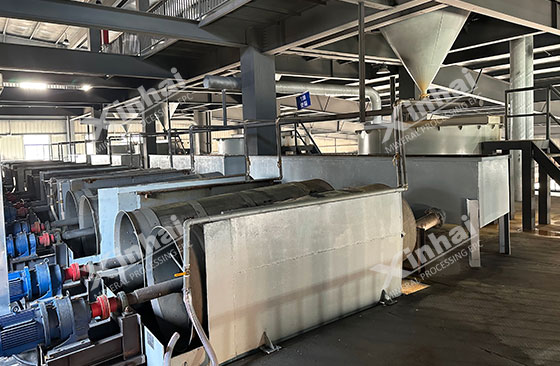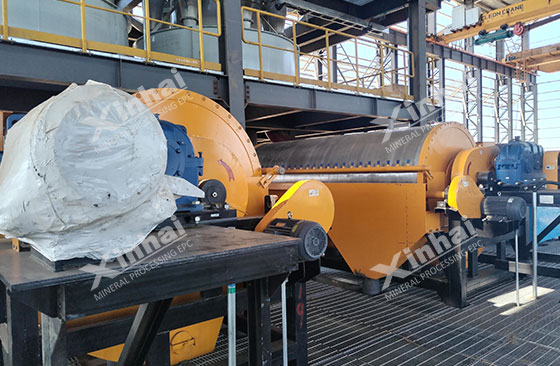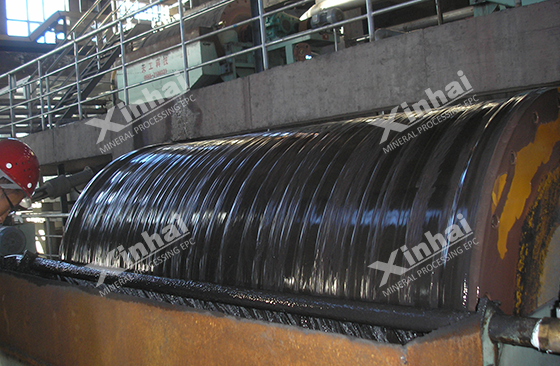As an important mineral separation technology, magnetic separation can not only effectively improve the recovery rate of non-ferrous and rare metal ores, but also optimize resource utilization and reduce production costs. Especially in the selection process of heavy-selection rough concentrates such as vein tungsten ore, vein tin ore, placer tin ore and seashore placer ore, magnetic separation technology has demonstrated its excellent separation ability. By precisely controlling the magnetic field intensity and operating parameters, magnetic separation can achieve efficient separation of target minerals in complex ore compositions, allowing mining companies to maintain their advantages in the fierce market competition. Therefore, in-depth discussion of the application of magnetic separation in different types of ores and its technological progress will provide important reference and guidance for the sustainable development of the mining industry.
Use the table of contents below to navigate through the guide:
01Selection of tungsten coarse concentrate
Tungsten is an important industrial metal, and its ores are mainly composed of wolframite and scheelite. According to research in nature, about 20 kinds of tungsten minerals have been discovered, but only wolframite and scheelite have significant industrial value. The beneficiation process of wolframite ore generally uses gravity separation. Coarse and medium-grained minerals use jigs, while fine-grained minerals are separated by shaking tables.
During the gravity separation process, due to the high density of wolframite, other high-density minerals (such as cassiterite, scheelite and certain sulfide minerals) often enter the coarse concentrate together with wolframite. This requires beneficiation in subsequent processing to improve the grade of tungsten concentrate while recovering various by-products.

Since wolframite is a weakly magnetic mineral, and cassiterite and scheelite are non-magnetic minerals, this property allows the magnetic separation method to effectively separate wolframite from associated minerals. By setting the appropriate magnetic field strength, precise separation of different magnetic minerals can be achieved, thereby improving the purity of the final tungsten concentrate.
Challenges in the beneficiation process
In the beneficiation process of tungsten ore, many challenges are often faced. For example, the complexity of the ore, the particle size distribution of the minerals, and the interaction between minerals may affect the efficiency of magnetic separation. In addition, how to select appropriate magnetic separation equipment and adjust operating parameters are also key factors. By continuously optimizing these processes, the recovery rate and grade of tungsten ore can be significantly improved.
02Separation of rough concentrate containing tantalum-niobium-monazite
Tantalum and niobium are two rare metals with important industrial value. Their main minerals include tantalite, columbite, chalcanthite and yttrium-niobium ore. Tantalum-niobium ore can be roughly divided into tantalite-columbite ore, chalcanthite ore and other tantalite-niobium ore.

In the rough separation process of tantalum-niobium ore, gravity separation is mainly used. However, in addition to tantalum-niobium minerals and zircon, rough concentrate often contains magnetite, ilmenite monazite, quartz and other minerals, with complex composition and difficult separation. Therefore, it is often necessary to combine multiple mineral separation methods, such as magnetic separation, gravity separation, flotation gravity separation, flotation, electrostatic separation and chemical treatment, to achieve effective separation.
Application of magnetic separation technology
In the separation process of tantalum-niobium ore, the application of magnetic separation technology is particularly important. Magnetic separation can effectively separate magnetic minerals from non-magnetic minerals and improve the purity of tantalum-niobium ore. In addition, through the reasonable configuration of magnetic separation equipment, efficient mineral separation can be achieved. In actual operation, factors such as magnetic field strength, processing particle size and pulp concentration will affect the final separation effect, so they need to be adjusted according to specific circumstances.

03Selection of rough concentrate of seaside sand ore
Seaside sand ore is mainly composed of minerals such as ilmenite, monazite, rutile and zircon. In the re-selected concentrate of seaside sand ore, ilmenite has the strongest magnetism, followed by monazite, while rutile and zircon are non-magnetic minerals. Rutile has a high electrical conductivity, so when processing seaside sand ore, a combined process of magnetic separation and electrostatic separation is usually used.
Combined process of magnetic separation and electrostatic separation
In the processing of seaside sand ore, magnetic separation is first used to separate ilmenite and monazite. Subsequently, rutile and zircon are further separated by electrostatic separation. This combined process not only improves the recovery rate of minerals, but also effectively reduces the processing cost. In view of the particularity of seaside sand ore, appropriately adjusting the operating parameters of magnetic separation and electrostatic separation will help achieve the best separation effect.

Magnetic separation technology for nonferrous and rare metal ores plays an important role in improving the grade of minerals and recovering by-products. Through in-depth analysis of tungsten ore, tantalum-niobium ore and seashore placer, it can be seen that combining multiple beneficiation methods and rationally configuring equipment are the key to achieving efficient separation. With the continuous development of technology, the application scope and efficiency of magnetic separation technology will be further improved, providing more support for the sustainable development of the mining industry.


 marketing@ytxinhai.com
marketing@ytxinhai.com  0086 13810327080
0086 13810327080 






































































































 CHAT
CHAT MESSAGE
MESSAGE




